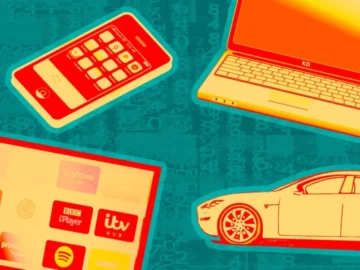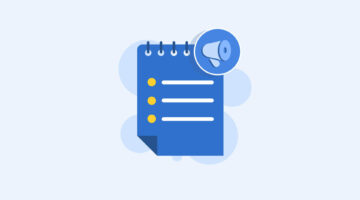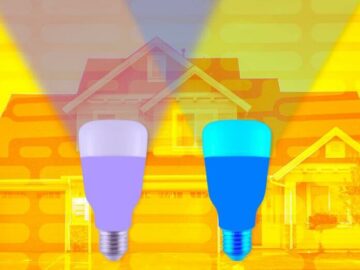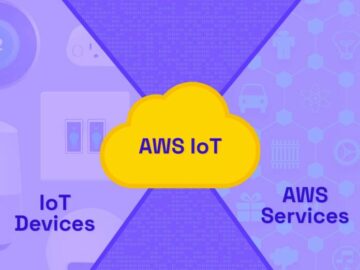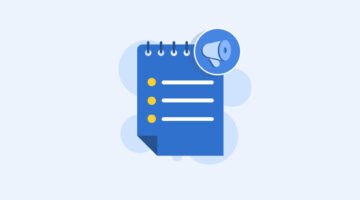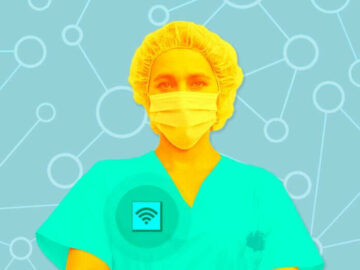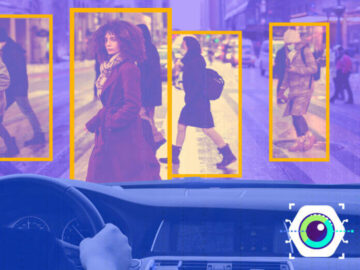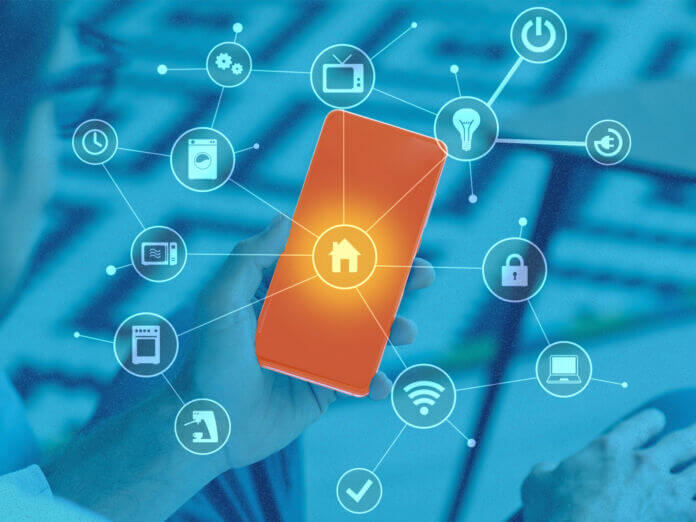
Connecting objects to smartphones to manage them and report data is becoming increasingly important in IoT app development. One of the most prominent applications of the Internet of Things (IoT) is in the medical field, where you use sensors to track vital signs like blood pressure and heart rate and then sent to the user’s smartphone.
This data is essential when keeping tabs on someone’s health. IoT devices, including smart thermostats, security cameras, and lighting systems, are managed and monitored using mobile applications. One way to exchange and use the data produced by IoT devices is to link mobile apps with third-party applications.
The Impact of IoT on Mobile Apps
There may be far-reaching consequences for the future of mobile app development brought forth by IoT. The Internet of Things is a system of networked computing devices that may exchange data and instructions over the Internet. IoT presents new opportunities and obstacles for mobile app developers. Ways in which IoT may affect the creation of mobile apps include:
IoT and App Integration
A wide variety of IoT devices, including smart thermostats, wearable tech, home automation systems, and more, may be integrated via the development of dedicated mobile applications. The connection allows customers to remotely operate and monitor their IoT devices using their phone.
Information Gathering and Evaluation
There is a need for mobile applications that can gather, process, and provide actionable data generated by IoT devices. For example, a fitness app may track a user’s heart rate, number of steps taken, amount of sleep, and other metrics by connecting to their wearable device.
Better Interactions with Users
With the help of IoT, mobile applications can now provide experiences tailored to users and informed by their environment. Applications can provide personalized information, suggestions, and alerts according to a user’s tastes, whereabouts, and real-time data.
Efficient and Better Control
You can automate and manage many things in your connected environment with the help of IoT devices. As an example, a user may manage their home security system, lights, and appliances from afar using an app.
IoT Security and Privacy
Concerns about security and privacy are growing due to the proliferation of IoT devices and the applications that connect them to mobile devices. Developers must use strong security mechanisms to safeguard user privacy and data sent across devices.
Level of Development Difficulty
Adding IoT complicates development. Developers must consider various platforms, protocols, and device requirements. They need to be well-versed in IoT technologies and components and have the ability to identify and address the specific difficulties brought by these technologies.
Closer Cooperation
Teams of data scientists, cloud architects, hardware engineers, and mobile app developers often work together to build IoT apps. We can only develop complete IoT solutions with close cooperation and coordination.
Continuous Iteration and Updates
Developers must keep up with the newest innovations and standards in the ever-changing world of IoT devices. Adapting to new devices, protocols, or security measures may need ongoing iteration and upgrades for mobile applications that integrate IoT.
Future Prospects and Trends
Computing at the Edge and Edge AI
With the rise of edge computing and edge AI, developers of IoT apps may analyze data in real time and make decisions right at the network’s periphery. Developers may increase system efficiency, privacy, and latency by directly implementing analytics models and AI algorithms on IoT devices.
As edge computing capabilities advance, new use cases and applications in smart cities, autonomous cars, and industrial automation will become possible, and this trend will accelerate.
Distributed Ledger Technology and Blockchain
IoT apps progressively use blockchain and distributed ledger technology (DLT) to strengthen trust, transparency, and security in decentralized networks. Data integrity, tamper resistance, and trustless interactions are major issues with the Internet of Things.
Developers may solve these problems using blockchain technology for safe data storage, transaction validation, and identity management. Many sectors stand to benefit greatly from the coming together of blockchain technology with the Internet of Things, including healthcare, energy distribution, and supply chain management.
IoT Solutions Driven by AI
Intelligent automation, predictive analytics, and customized experiences are made possible by AI-powered IoT technologies, changing the game regarding app creation. Developers can automate mundane operations, provide customers with context-aware services, and mine IoT data for important insights using AI algorithms and machine learning.
Conclusion
Developers now face new problems and possibilities due to IoT radically changing the app development environment. For developers to keep up with the ever-changing demands of connected ecosystems, they need to use new technology and industry best practices to build safe, creative apps for IoT.
New opportunities for digital connection, automation, and intelligence may be unlocked by developers who overcome these obstacles and embrace the promise of IoT.
- SEO Powered Content & PR Distribution. Get Amplified Today.
- PlatoData.Network Vertical Generative Ai. Empower Yourself. Access Here.
- PlatoAiStream. Web3 Intelligence. Knowledge Amplified. Access Here.
- PlatoESG. Carbon, CleanTech, Energy, Environment, Solar, Waste Management. Access Here.
- PlatoHealth. Biotech and Clinical Trials Intelligence. Access Here.
- Source: https://www.iotforall.com/an-overview-of-iot-app-development
- :is
- :where
- $UP
- 1
- a
- ability
- About
- accelerate
- According
- across
- actionable
- adapting
- address
- advance
- afar
- affect
- AI
- AI-powered
- Alerts
- algorithms
- allows
- amount
- an
- analytics
- analyze
- and
- app
- App development
- appliances
- applications
- apps
- architects
- ARE
- ARM
- AS
- At
- automate
- Automation
- autonomous
- autonomous cars
- BE
- become
- becoming
- benefit
- BEST
- best practices
- Better
- blockchain
- blockchain technology
- blood
- Blood Pressure
- brought
- build
- by
- cameras
- CAN
- capabilities
- cars
- cases
- chain
- changing
- Cities
- Close
- Cloud
- coming
- complete
- components
- computing
- Connect
- connected
- Connecting
- connection
- Consequences
- Consider
- cooperation
- coordination
- creation
- Creative
- Customers
- customized
- data
- data storage
- decentralized
- decentralized networks
- decisions
- dedicated
- demands
- develop
- developers
- Development
- device
- Devices
- difficulties
- digital
- directly
- distributed
- Distributed Ledger
- distributed ledger technology
- Distributed Ledger Technology (DLT)
- distribution
- DLT
- driven
- due
- Ecosystems
- Edge
- edge computing
- efficiency
- embrace
- energy
- Engineers
- Environment
- essential
- Ether (ETH)
- ever-changing
- example
- exchange
- Experiences
- Face
- far-reaching
- field
- fitness
- For
- forth
- from
- future
- game
- gather
- gathering
- generated
- greatly
- Growing
- Hardware
- Have
- Health
- healthcare
- Heart
- help
- Home
- Home Automation
- Home Security
- HTTPS
- identify
- Identity
- identity management
- Impact
- implementing
- important
- in
- include
- Including
- Increase
- increasingly
- industrial
- industrial automation
- industry
- information
- informed
- innovations
- insights
- instructions
- integrate
- integrated
- integrity
- Intelligence
- interactions
- Internet
- internet of things
- iot
- iot devices
- issues
- iteration
- jpg
- Keep
- keeping
- Latency
- learning
- Ledger
- Lighting
- lights
- like
- LINK
- machine
- machine learning
- made
- major
- major issues
- make
- manage
- managed
- management
- many
- max-width
- May..
- measures
- mechanisms
- medical
- Metrics
- mine
- Mobile
- Mobile app
- Mobile App Development
- Mobile Applications
- mobile devices
- mobile-apps
- models
- Monitor
- monitored
- more
- most
- must
- Need
- networks
- New
- Newest
- now
- number
- objects
- obstacles
- of
- often
- on
- ONE
- ongoing
- only
- operate
- Operations
- opportunities
- or
- Other
- over
- Overcome
- overview
- Personalized
- phone
- Platforms
- plato
- Plato Data Intelligence
- PlatoData
- possibilities
- possible
- practices
- predictive
- Predictive Analytics
- presents
- pressure
- privacy
- problems
- process
- Produced
- progressively
- proliferation
- prominent
- promise
- prospects
- protocols
- provide
- radically
- Rate
- real
- real-time
- real-time data
- regarding
- remotely
- report
- Requirements
- Resistance
- right
- Rise
- safe
- safeguard
- scientists
- Sectors
- security
- security measures
- sensors
- sent
- Services
- Signs
- sleep
- smart
- Smart Cities
- smartphone
- smartphones
- Solutions
- SOLVE
- specific
- stand
- standards
- Steps
- storage
- Strengthen
- strong
- supply
- supply chain
- supply chain management
- system
- Systems
- tailored
- taken
- tastes
- tech
- Technologies
- Technology
- that
- The
- The Future
- their
- Them
- then
- These
- they
- things
- third-party
- this
- time
- to
- together
- track
- transaction
- Transparency
- Trend
- Trust
- trustless
- unlocked
- upgrades
- use
- User
- user privacy
- users
- using
- validation
- variety
- various
- via
- vital
- Way..
- ways
- we
- wearable
- when
- which
- WHO
- wide
- will
- with
- Work
- work together
- world
- you
- Your
- zephyrnet

